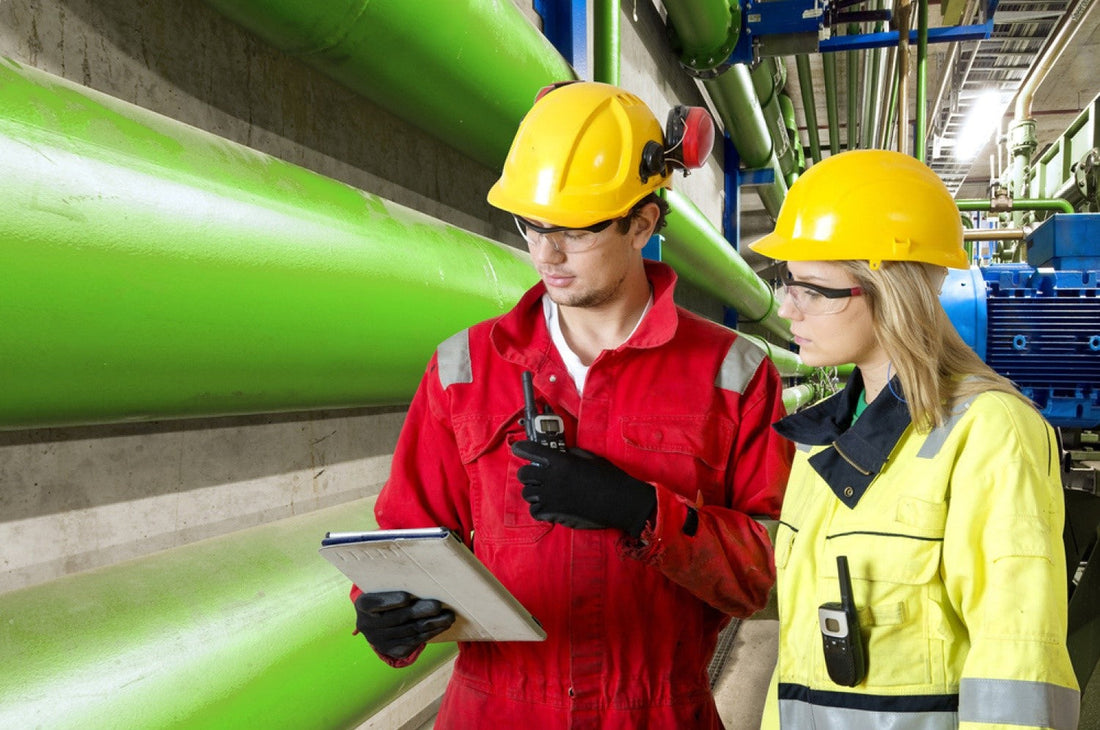
7 Ways Protective Equipment Keeps You Safer on the Job
Share
In the USA, work-related injuries are experienced by around 3,000 plumbers in a year. Moreover, different health problems are seen. This states the significance of PPE and safety equipment.
Plumbers face multiple tough situations in the workplace that can cause accidents. These include working in a tight space, handling dust, etc. This blog points out 7 ways in which PPE kits ensure workplace safety, along with performance enhancement and compliance with legal standards.
What is PPE?
PPE (Personal Protective Equipment) refers to the equipment that plumbers wear during work to ensure safety from workplace injuries. PPE equipment comprises gloves, hard hats, safety glasses, coveralls, etc. A plumber needs to know about having the right kit for any activity.
7 Ways PPE Ensures Workplace Safety
To ensure safety from accidents, prioritizing plumber tools and equipment is essential. Here are some ways in which PPE keeps you safe in the workplace.

1. Protecting from Hazardous Chemicals
Suppose a plumber is cleaning a drain. In such a case, there is a high chance of getting exposed to harmful chemicals. Also, hazardous substances (like soldering fumes) are used in a car workshop or in a manufacturing plant.
Ensuring safety from exposure to harmful chemicals lowers staff concerns, and they can concentrate on their work. This leads to performance improvement.
As per the Hazard Communication Standard (HCS) of the OSHA, both employees and employers must possess adequate information related to hazardous chemicals. The necessary equipment used in plumbing must be given to the workers to ensure safety in the workplace.
2. Preventing Bruises and Cuts
Around 1000 workdays are lost in a year in the USA because of injuries. Cuts, wounds, and bruises are common in handling different plumbing tools or working in difficult areas. Having adequate equipment is necessary to stay safe from any injury.
Sharp tools (pipe cutters, reamers, etc.) are difficult to handle, and this increases the chance of workplace accidents for plumbers. Working in confined spaces also increases injury risks. Therefore, they must be given proper PPE and safety equipment in the workplace.
Suppose you are working in a construction area where a building is being demolished. There is a high chance of getting a head injury because any brick or other material might fall. In this case, you need to wear a headgear.
Cut-resistant gloves, knee pads, etc., are effective in dealing with bruises and cuts. While wearing the right equipment, a plumber can ensure a better performance. This also helps in following the legal standards.
3. Handling Falls, Trips, and Slips
Plumbers often work in slippery areas, and that is highly dangerous. Here, a professional needs to wear anti-skid footwear. This improves traction, thereby dealing with trips and slips.
As per the WHO, 684,000 global deaths occur due to falls in a year. Visibility vests and knee protectors are the key examples of PPE equipment that can be considered to prevent falls. Wearing the right footwear is vital in combating falls and slips.
4. Preventing Respiratory Problems
There is a high chance of getting exposed to mold and dust if a plumber works in an old building or construction area. Why are these dangerous? Well, professionals might get respiratory problems (asbestosis, COPD, asthma, etc.). Around 15-23% of new asthma cases in the USA are work-related.
Long-term exposure to dust and debris leads to serious respiratory diseases, and that also hampers workplace performance. How to deal with this problem? Employers must be aware of the plumbing equipment list that is to be given to the workers so that they do not get respiratory issues.
Dust masks and respirators are the needed PPE and safety equipment that help employees stay protected from respiratory issues. This also leads to compliance with the associated regulations.
5. Protecting from Electrical Hazards
Electrical shocks are common for plumbers in workplaces. For example, professionals tackling wiring in a renovation site have a high chance of getting shocked. This lowers their performance, and the employer might also be in legal trouble.
Considering the right PPE equipment is important to mitigate electrical hazards. Dielectric footwear and insulated gloves are the main examples of PPE equipment that can be considered in this case. These items prevent electric current from entering a plumber’s body.
6. Improving Visibility
Do you have to work in low-light areas? This is concerning because of a higher chance of workplace accidents. Here, considering effective PPE and safety equipment is important.
While working in a dark place, like inside a tunnel, a plumber needs to wear bright-colored gear. Moreover, using headlamps can also be a good option. This visibility helps in preventing accidental hits or stepping on others.
Selecting the correct equipment enhances the vision of a professional so that the individual gets better clarity in executing an operation. This also results in performance enhancement.
7. Complying with Safety Regulations
What is the best leak detection equipment for plumbing? An acoustic listening device is an effective one in this case. Using any PPE equipment helps deal with workplace accidents, along with complying with the safety regulations.
According to OSHA, PPE must be constructed and designed safely. Such equipment must also be maintained properly. It is the duty of both employers and employees to comply with the legal standards.
Issues, like fines, job area shutdowns, etc., are mitigated when you comply with the needed laws and standards. Along with safety maintenance and performance enhancement, this also benefits a business in attracting customers.
Let’s check out certain plumbing tasks and the needed PPE equipment.
|
Plumbing Task |
Suggested PPE Equipment |
|---|---|
|
Pipe cutting & sawing |
Safety goggles, cut-resistant gloves, ear protection, and a dust mask |
|
Soldering & welding pipes |
Heat-resistant gloves, welding goggles/face shield, long-sleeve fire-resistant clothing |
|
Handling chemicals (cleaners, sealants, solvents) |
Chemical-resistant gloves, safety goggles, respirator mask, apron |
|
Clearing blocked drains/toilets |
Rubber gloves, splash-resistant goggles, waterproof apron, face mask (odor/chemical fumes) |
|
Working in confined spaces |
Hard hat, respirator, protective gloves, knee pads, portable ventilation system |
|
Operating power tools (drills, grinders) |
Safety goggles, ear protection, cut-resistant gloves, steel-toe boots |
|
Pipe installation & heavy lifting |
Steel-toe boots, back support belt, gloves, hard hat |
|
Working at heights (ladders, scaffolds) |
Hard hat, safety harness, non-slip boots, gloves |
|
Exposure to asbestos/old insulation |
Disposable coveralls, P2/N95 respirator, gloves, goggles, and shoe covers (special disposal) |
|
General plumbing repairs |
Safety goggles, work gloves, steel-toe boots |
Table: Plumbing Tasks and Suggested Equipment
Final Thoughts
PPE equipment ensures safety, thereby preventing workplace accidents. Wearing a face shield helps a worker from getting any respiratory disease. The items must be stored in areas with proper ventilation.
Prioritising Safety Over Anything
Workplace safety is a priority for an employer. This helps in dealing with workplace injuries, along with ensuring performance increases and following safety standards. We offer a range of specialised PPE equipment that is designed to ensure user safety. Visit us to obtain the one you require.
Frequently Asked Questions
1. Why Should PPE Be Worn at the Work Site?
PPE equipment protects a professional from different injuries and accidents.
2. What Are the Top PPE Items for Construction Workers?
Hard hats, safety glasses, safety gloves, etc., are needed for the construction workers.
3. What Can I Do if I Do Not Get Adequate PPE from My Employer?
A company is legally liable to provide the right PPE equipment to the employees. An employee can raise the matter with the employer. There is also a scope for raising a grievance.
4. Can I Share My PPE With My Colleague?
No. You should not share your PPE with your colleague.
